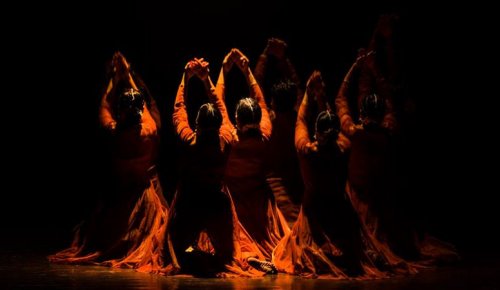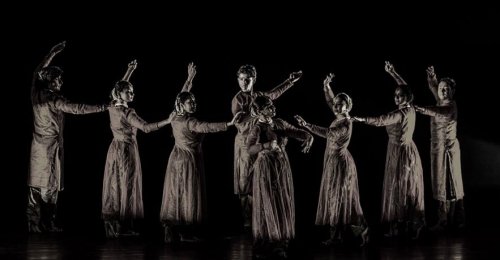 |  Follow us    
  |
 |  Follow us    
  |
Trishanku by Rachna Yadav - Kasturika Mishra e-mail: kasturika69@gmail.com Photos: Shivani Dass September 9, 2018 Me and my mother....This was the theme of the performance by Rachana Yadav Dance Studio at the Shriram Centre Auditorium, Delhi. Adolescent love is not easy to handle. The hormonal changes, the upheavals in mind and body all are intertwined into a complex cycle of haves and have nots. Who love and for what reason makes you a perennial doubting Thomas. For parents it's a double challenge. If you are as liberated as the mother in Mannu Bhandari's story Trishanku you feel for what are you toiling in life. Your life holds as much weight as your life plans. Who is the rider and who is riding the wave of youth?  The raag Megh alaap and the various entries and exits of the dancers were projected with some dramatic episodes like the mother discovering the secret letter by the girl to the boy and all the effects of light, pakhawaj and emotional upheavals were explored beyond the space of only tatkars and short poems defining the mood of the story. Agreed, it would have effected and crossed the lines of the rigidity of Kathak but Rachana Yadav's young dancers were already emoting with their feet and patterns and what difference would it make if few dialogues were exchanged between the central characters?  The entire show didn't step once into prioritizing whether it was a dramatic story, a pakhawaj recital or a pure Kathak piece set to few taals. Each when played was leaving the rest of the medium behind. Overall, it was a heartfelt attempt on paths of motherhood. Kasturika Mishra is a cataloging specialist librarian, writes reviews on the performing arts, and is advisor to Kalinga Literary Festival, Bhubaneswar. |